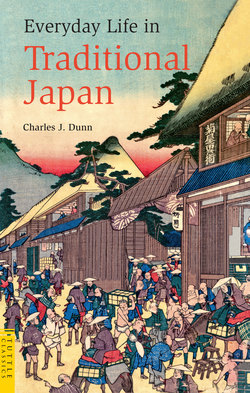Читать книгу Everyday Life in Traditional Japan - Charles Dunn - Страница 7
На сайте Литреса книга снята с продажи.
ОглавлениеPREFACE
Life in Japan has always had a highly individual flavor. This has not meant that the Japanese have been averse to accepting influences from abroad, and indeed, for most of her history Japan has received many foreign importations—which she has invariably modified to suit her own needs—first mainly from China, and during the last hundred years from the West, more recently especially from America. However, there was one long and important period during which the opposite was true, that of the rule of the Tokugawa Shoguns, and that is the period that is the subject of this book.
A visitor from the West is constantly made aware of what seems to him a duality in Japanese life, a mixture of Western and traditional ingredients. Japan, for all the modernity of its economy and for all the impatience that many young Japanese show towards their country’s past, has nevertheless retained very much that is characteristically Japanese. Much of it—and this is true of any country that has a history—comes from the past. The political structure of this past is that which came to end in the middle of the nineteenth century, in dramatic manner, with the Meiji Restoration of 1868. It had been inaugurated in 1603, when Tokugawa Ieyasu took over the supreme power as military dictator; after a settling-down period, civil strife came to an end, and there followed more than two centuries of freedom from large- scale conflicts, and also of almost complete isolation from the outside world. This was a time of great stability, in which what was to be the tradition behind present-day Japan thickened and gelled, so that, although there was in fact a certain amount of development within these centuries, they present a largely consistent appearance.
We can, therefore, consider the period from about 1600 to 1850, the years of undisputed Tokugawa rule, as those of “Traditional Japan,” and the aim of this book is to give the general reader a picture of the background to living in Japan in Tokugawa times.
I wish to express my thanks to my wife, who read and typed the manuscript, and to Mr. Peter Kemmis Betty, of Batsford’s, for much help during the preparation of this book, and especially for his care in the final selection of the pictorial material. I should also like to thank Mr. L. Broderick for his splendid drawings, which have provided many illustrations that could not otherwise have been included. The reader will find other vivid pictures of life in pre-Meiji Japan in the color prints of contemporary artists such as Hiroshige and Hokusai.
C.J. DUNN
